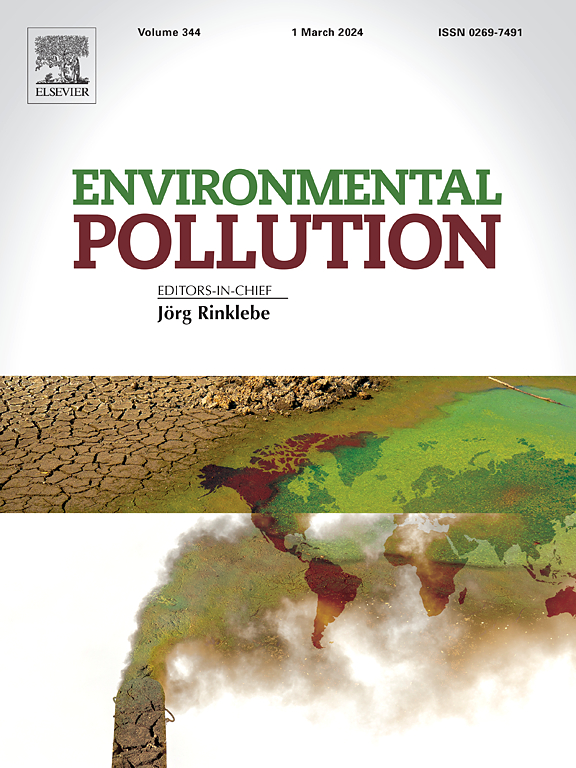Microplastic uptake with food increases risk-taking of a wide-spread decomposer, the common pill bug Armadillidium vulgare
IF 7.6
2区 环境科学与生态学
Q1 ENVIRONMENTAL SCIENCES
引用次数: 0
Abstract
Exposure to microplastics (MPs) i.e., plastic fragments between 1 μm and 1 mm in diameter causing growing concern for wildlife and humanity. It is now evident that MPs can accumulate in soil, freshwater, seawater and the atmosphere; thus, living organisms are directly or indirectly exposed to these significant ecological stressors globally. Studies on the physiological effects of MPs in wildlife are emerging, yet, to date, only a handful of studies with a special focus on how MPs affect animal behaviour are available, and there is even less research on how different components of among- and within-individual behavioural variation are affected by MPs. The main goal of this study was to investigate how prolonged exposure (6 weeks) to 10 μm spherical polystyrene microplastics in food (24.85 particles/mg) influences individual variation in risk-taking behaviour in a widespread decomposer, the common pill bug Armadillidium vulgare. Our results indicate a strong MP effect on different levels of behavioural variation: (i) individual mean risk-taking increased, while (ii) a correlation between mean risk-taking and residual within-individual risk-taking variation emerged (risk-takers became less predictable) in the MP treated group. These findings underscore the intricate effects of MPs on individual behavioural variation, with potentially far-reaching ecological and evolutionary consequences given their pervasive presence in both terrestrial and aquatic ecosystems. The negative impacts of these changes are widespread; in our study, MP exposure may increase the susceptibility of A. vulgare to predation, potentially contributing to population decline.

求助全文
约1分钟内获得全文
求助全文
来源期刊

Environmental Pollution
环境科学-环境科学
CiteScore
16.00
自引率
6.70%
发文量
2082
审稿时长
2.9 months
期刊介绍:
Environmental Pollution is an international peer-reviewed journal that publishes high-quality research papers and review articles covering all aspects of environmental pollution and its impacts on ecosystems and human health.
Subject areas include, but are not limited to:
• Sources and occurrences of pollutants that are clearly defined and measured in environmental compartments, food and food-related items, and human bodies;
• Interlinks between contaminant exposure and biological, ecological, and human health effects, including those of climate change;
• Contaminants of emerging concerns (including but not limited to antibiotic resistant microorganisms or genes, microplastics/nanoplastics, electronic wastes, light, and noise) and/or their biological, ecological, or human health effects;
• Laboratory and field studies on the remediation/mitigation of environmental pollution via new techniques and with clear links to biological, ecological, or human health effects;
• Modeling of pollution processes, patterns, or trends that is of clear environmental and/or human health interest;
• New techniques that measure and examine environmental occurrences, transport, behavior, and effects of pollutants within the environment or the laboratory, provided that they can be clearly used to address problems within regional or global environmental compartments.
 求助内容:
求助内容: 应助结果提醒方式:
应助结果提醒方式:


